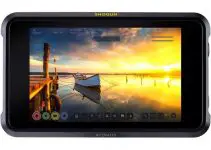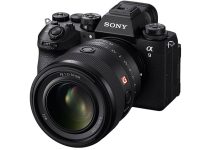Even with a plethora of gimbal options available to filmmakers at nearly every price point handheld shooting is a valuable skill. Handheld camera moves are a different aesthetic and don’t require any additional equipment to perform. This last point is a big advantage. Gimbals require you to pack a heavier, larger bag and take time to configure properly. Handheld is just grab and go.
A big fan of handheld shooting is filmmaker Thomas Alex Norman and he has 10 different camera moves you can use to create beautiful shots. He also shares many of his basic tips for handheld shooting, so there is a lot to dig into with this video.
Tip number one is to stick with wider lenses. He uses both a 35mm and 14mm lens for his handheld work. The reason is that the wider lens reduces the impact of camera shake. If you have ever tried working with a super telephoto lens without stabilization you know how jumpy and bad it can be.
Now for the 10 different shots. He actually classifies them as two different types: gimbal-replacement shots and intentional handheld shots. The first is simply trying to get the smooth, gimbal-like movement even when handheld while the second really lean into the distinct, shaky look of handheld operation.
For the gimbal replacements you will want to make sure any built-in stabilization options are turned on. This helps smooth out the moves and modern systems are actually quite impressive with how much they can stabilize footage. Then some post stabilization can work its magic.
Move #1: Push Forward
Sounds straightforward enough by the name, but the technique here is benefitted by the use of a camera strap around the neck. By slightly pulling down on the strap you will get some extra stability as you move forward. Leaning forward can help a bit here as well.
Move #2: Pull Out
Pull out is basically the exact opposite as the push forward. Pull down on the strap as you move backwards. To be extra stable the move is to lean forward and then transition to leaning backwards. It doesn’t have as much range as actually walking, but it is very smooth.
Move #3: The Track
Side-to-side moves are executed this way. What you will do is lean all the way towards the side you want to start with. Then slowly shift your weight from one foot to the other as you move the camera on “the track.” Again, use the camera strap around the neck as an extra contact point.
You can walk for this move and gain more range of motion, though it will be a bit more shaky.
Move #4: The Tracking Pan
Elevating the basic, somewhat amateurish-looking pan is the tracking pan. What you’ll do is a similar move to the track above and just add a little bit of a pan movement at the same time. It looks a good deal more interesting than just a basic pan.
Move #5: The Dutch Spin
The Dutch angle can be combined with a spin move for a fun effect. Handheld you’ll again want to rely on a taut camera strap around the neck for extra stability and control. Having one foot in front of the other you will want to put your weight on one and then while spinning the camera you can shift your weight to the other foot. This gives you either a forward or backwards move along with the spin.
Move #6: Push Into Focus
Pushing in to bring your subject into focus is always a good stylized move. It’s quite simple to pull off handheld too. You’ll want a lens that can create a shallow depth of field. Using a similar technique to the push in you’ll want to find your ending point, set your focus, lock it there, and then go back to the beginning and perform the move. You can also do the reverse and pull out into focus.
Move #7: Follow Over Shoulder
The first of the intentional handheld shots is the follow over shoulder. To start, you’ll actually want to turn off the stabilization of your camera. This is a great technique to learn in general.
Holding the camera stable with your elbows tucked in close to your body and then with your knees slightly bent you can compensate for much of the problematic movements while keeping some natural handheld shake. Then just walk forward carefully and at a slower pace to make it look good.
Move #8: Tracking Backwards
This is the reverse of the follow over shoulder. You will be walking backwards so you’ll need to be careful, but with knees slightly bent and arms in towards the body you can keep it just stable enough. Slow motion can improve these shots a ton as it’ll smooth the footage a tad without eliminating the organic shake.
Move #9: Whip Pan
This shot is a setup for a bigger effect. By pushing in and then whipping your camera to the side for a pan you can use that as a fun cutting point for a transition. The next shot you’ll obviously start with the pan in the same direction.
Move #10: Object Tracking
Meant to be the second part of the whip pan transition, a fun effect is to start with a whip pan and then immediately do an object tracking shot. Basically just following the movement of an object in the next shot. By keeping a lock on action you can make transitions feel smooth for the viewer.
Do you have any of your own handheld shooting tips?
[source: Thomas Alex Norman]
Disclaimer: As an Amazon Associate partner and participant in B&H and Adorama Affiliate programmes, we earn a small comission from each purchase made through the affiliate links listed above at no additional cost to you.




